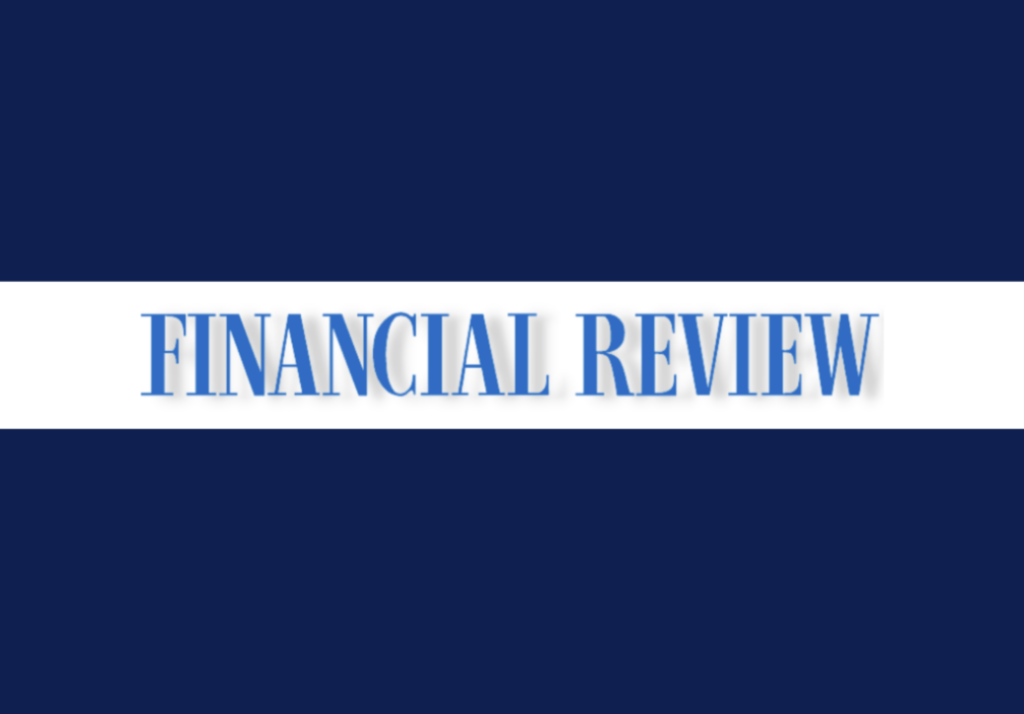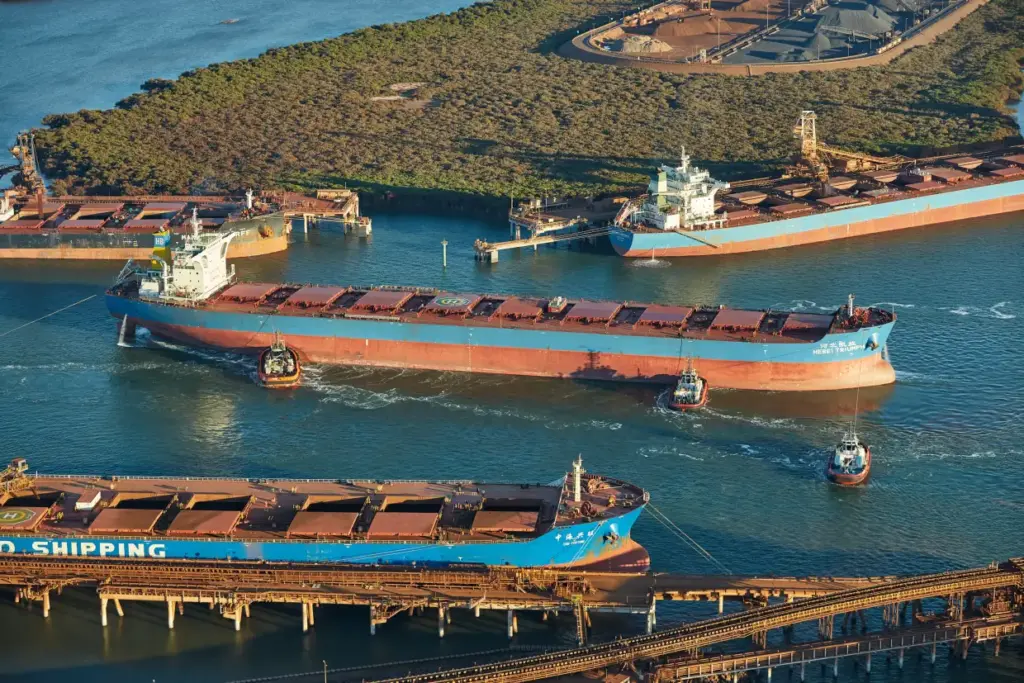

Article by Brad Thompson courtesy of the Australian Financial Review.
Australia is facing a $25 billion-a-year economic hit as iron ore export epicentre Port Hedland enters a new era of softer prices for the steel-making ingredient, according to a report backed by BHP, Fortescue Limited, Gina Rinehart’s Roy Hill and others.
The value of production linked to Port Hedland, where most of the iron ore mined in Western Australia is loaded for export, is expected to peak at $89.2 billion in 2023-24.
The report forecasts a steep fall to $64.2 billion by 2027-28 and that the value of production will settle around the lower level until at least 2032-33.
The findings are in line with Reserve Bank of Australia warnings that Chinese demand for Australian iron ore may have peaked, and based on conservative price forecasts provided by the big miners who use the port.
Port Hedland on the Pilbara coast of Western Australia is the world’s biggest cargo port and major supplier of iron ore and lithium to China.
The study into the economic significance of the port and the 10-year outlook was prepared by consultants ACIL Allen for the Port Hedland Industries Council (PHIC).
The PHIC members are iron ore heavyweights BHP, Fortescue and Roy Hill, WA government-controlled Pilbara Ports, iron ore and lithium miner Mineral Resources, lithium miner Pilbara Minerals and privately owned magnesium producer Consolidated Minerals, who all provided production and economic data.
Capital expenditure to jump
Rio Tinto, which operates its own iron ore port infrastructure on the Pilbara coast, exports salt from Port Hedland and also contributed to the study.
The forecast $25 billion fall in the value of production from mining supply chains linked to Port Hedland implies a major decline in government revenue and industry profits from the second half of this decade and into the 2030s.
ACIL Allen said the findings were based on price and export volume data for iron ore and lithium (spodumene concentrate) provided by the port users.
“The conservative unit price assumptions for iron ore provided by companies in their forward guidance are comparable to the iron ore price assumptions adopted by Treasury in the WA state budget whereby the iron price is typically set at levels within the range of $US60-70 per tonne over the outyears,” the report said.
Iron ore production linked to the port is forecast to increase from 544.8 million tonnes in 2022-23 to a peak of about 589.4 million in 2027-28 before stabilising.
Annual operating expenditure is expected to peak at $26.1 billion in 2024-25, before steadily declining to $24.5 billion by 2032-33, while annual capital expenditure is forecast to jump from $10.7 billion in 2022-23 to $15.3 billion in 2024-25.
BHP is on track to produce between 282 million and 294 million tonnes of iron ore for export from Port Hedland in 2023-24, and remains committed to boosting capacity.
“We continue to invest in improvements to our rail and port operations, which are essential for growth in the medium term to 305 million tonnes per annum and beyond,” it said last week.
BHP, by far Port Hedland’s biggest user, received an average price of $US106.30 a tonne for iron ore in the March quarter and the cost of producing each tonne – excluding government royalties and shipping costs – would be no higher than $US18.90 across 2023-24.
Fortescue, holding on to hopes of shipping 192 million and 197 million tonnes in 2023-24, is due to deliver March quarter results on Wednesday.
The RBA expects steel demand within the Chinese property sector to fall to 58 million tonnes by 2050, down 80 per cent from 296 tonnes in 2019 as the population shrinks, and has warned this could have a significant impact on iron ore demand and pricing.
Mining royalties
The ACIL Allen report found the Port Hedland mining supply chain supported more than 22,000 jobs in WA, representing one in every nine jobs in the state.
The WA government received $6 billion in taxation payments linked to the port in 2022-23, $5.56 billion in the form of mining royalties.
The report put the total economic contribution to Australia at $103.7 billion, about 4 per cent of the national economy, with the Commonwealth government receiving $14 billion in taxes.
The report estimates the port supply chain will contribute $156.3 billion in taxation and royalty payments to the WA and Commonwealth governments between 2023-24 and 2032-33.
PHIC chief executive Kirsty Danby said the report reflected the port’s vital contribution it made to local, state and national economies through taxes, royalties, wages and salaries.
“The one figure which encapsulates that economic might is that the port and its supply chain is responsible for one in every nine full-time jobs in WA,” she said.
“It is vital that our resources sector continues to be supported to ensure it remains internationally competitive so that the benefits continue to flow across the nation.”